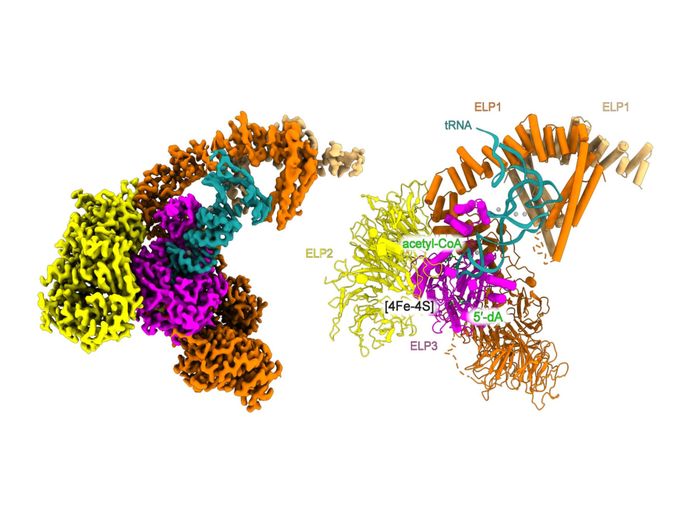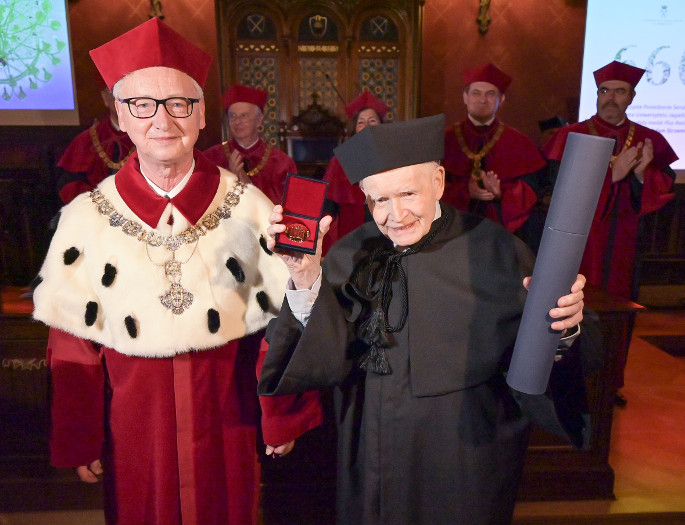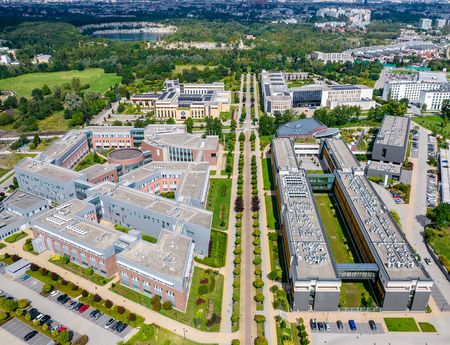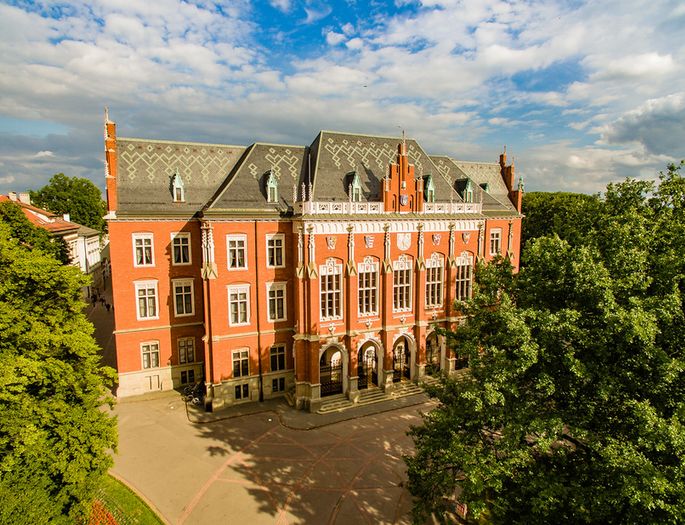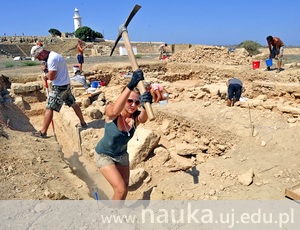
The sixth season of excavations conducted by the staff of the JU Institute of Archaeology in the ancient Cypriot city of Nea Paphos brought some new, fascinating discoveries – but it also brought more questions concerning that vital centre of power, trade, and religion.
Paphos is one of the most important archaeological sites in Cyprus. In the Greek-Roman period, it served as the island’s capital. In 2016, an interdisciplinary team led by Prof. Ewdoksia Papuci-Władyka studied several rooms of the portico located at the eastern edge of the city’s central square, the agora. The researchers have discovered a multitude of unique objects, such as a surgical instrument set, a glass flask for medicine or perfumes, ceramic oil lamps, bronze coins, fragments of wine amphorae, and numerous architectural elements.
Thanks to the use of geophysical methods, the JU archaeologists have also been able to locate an unknown construction measuring 25 by 15 metres, situated to the north-east of the agora. In the future, they will try to determine its purpose.
The excavations at Nea Paphos (2014–2016)
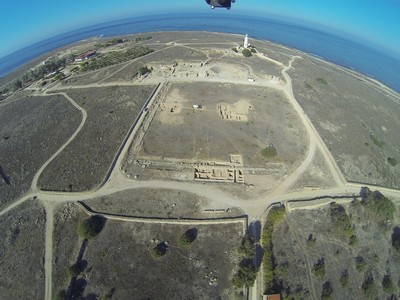 Bird’s eye view of the Archaeological Park and agora, 2014. Photo: K. Hanus. |
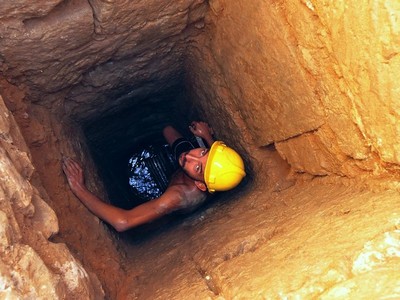 Exploring the 7 metre deep well at Excavation Point II, 2014. Photo: E. Papuci-Władyka |
 Marble Corinthian capital at Excavation Point III, 2015. Photo: R. Słaboński |
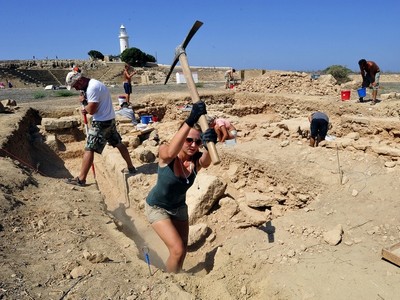 Excavating a temple (?) at Excavation Point I, 2014. Photo: R. Słaboński |
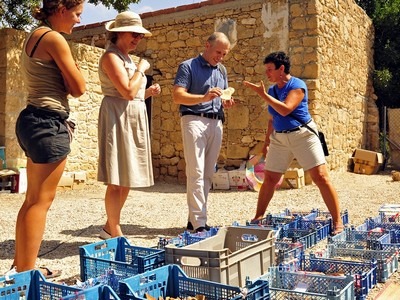 The project’s leader explains the methods of working with ceramics to the Ambassador of Poland to Nicosia, 2015. Photo: R. Słaboński |
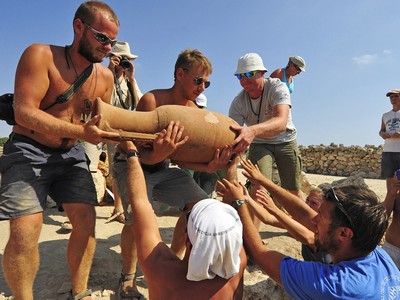 Roman wine amphora transported from Spain, discovered at Excavation Point IV, 2015. Photo: R. Słaboński |
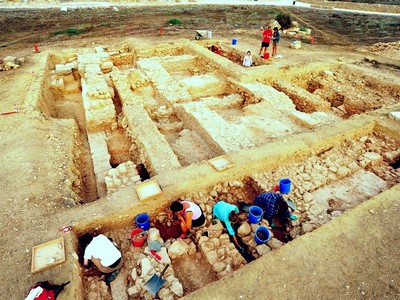 Excavation Point I, Building A (probably a temple). Photo: R. Słaboński |
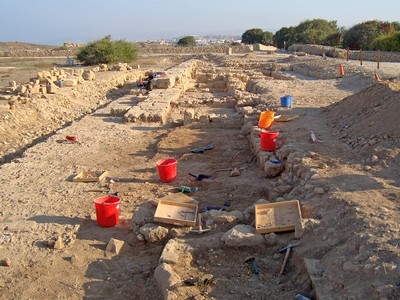 Agora’s eastern portico, rooms 15 and 16, housing the ‘surgeon’s study’ (south side view), 2016. Photo: E. Papuci-Władyka |
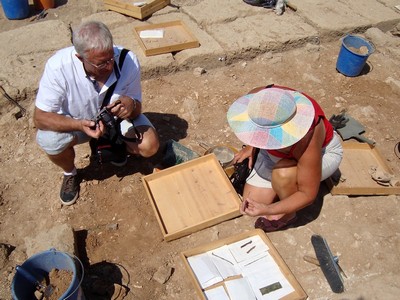 Prof. Ewdoksia Papuci-Władyka presents the newly discovered surgical instruments to Prof. Jan Święch, Dean on the JU Faculty of History. Photo: Ł. Miszk |
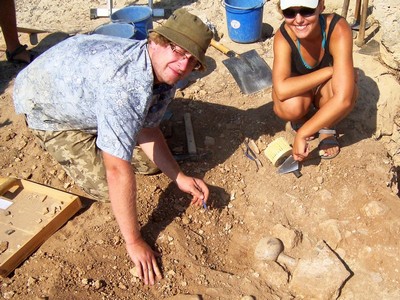 Agora. Discovering glass plates, coins and lamps in Room 15 at Excavation Point II, 2016. Photo: E. Papuci-Władyka |
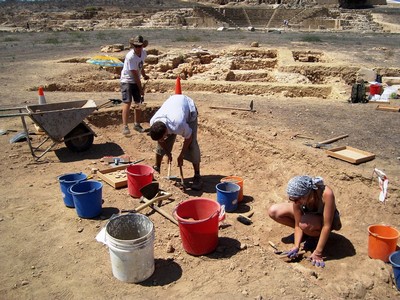 Working at Excavation Point V (Excavation Point I in the background), 2016. Photo: E. Papuci-Władyka |
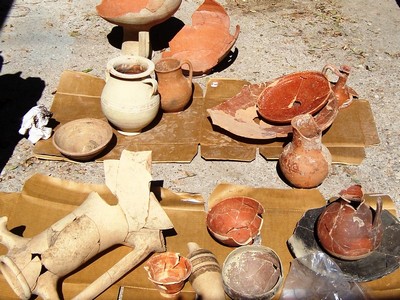
Ceramic containers found in the well glued together. Photo: E. Papuci-Władyka |
Original text: www.nauka.uj.edu.pl


